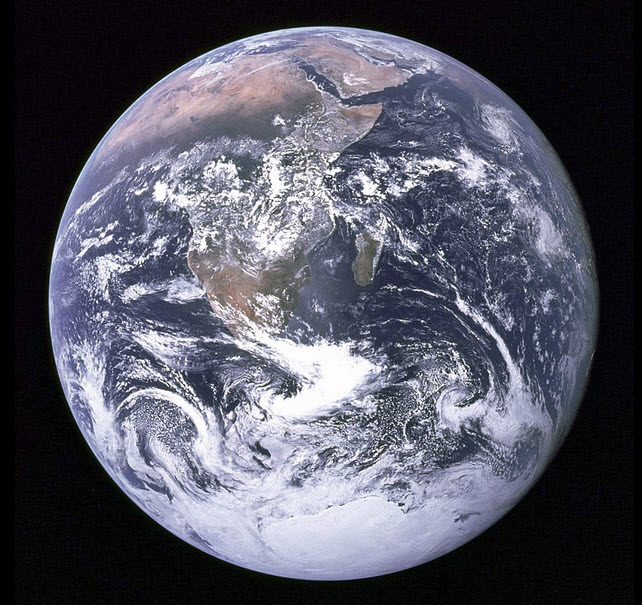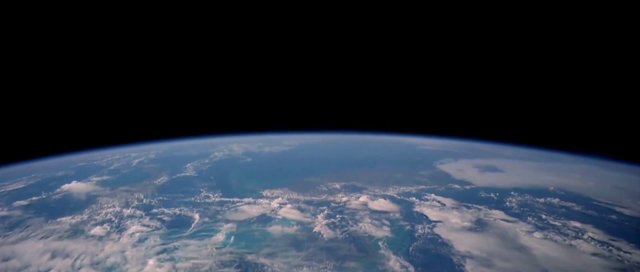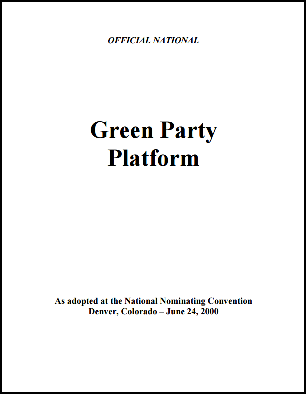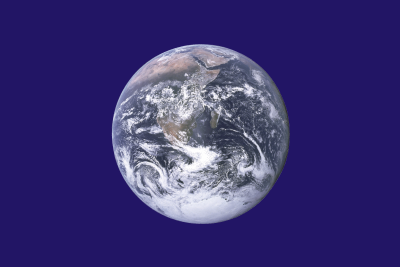Environmental protection: Difference between revisions
Siterunner (talk | contribs) No edit summary |
Siterunner (talk | contribs) No edit summary |
||
| Line 51: | Line 51: | ||
''While this book can be seen as a synthesis of all of Fritjof’s previous works into one unifying framework, perhaps notably The Web of Life, it is also an integration of the last couple of decades’ scientific developments. The contribution of Pier Luigo Luisi cannot be underestimated, and I really enjoyed learning about his work, especially having previously studied the work of Lynn Margulis in this area (see for example his 2006 work The Emergence of Life: From Chemical Origins to Synthetic Biology).'' | ''While this book can be seen as a synthesis of all of Fritjof’s previous works into one unifying framework, perhaps notably The Web of Life, it is also an integration of the last couple of decades’ scientific developments. The contribution of Pier Luigo Luisi cannot be underestimated, and I really enjoyed learning about his work, especially having previously studied the work of Lynn Margulis in this area (see for example his 2006 work The Emergence of Life: From Chemical Origins to Synthetic Biology).'' | ||
[[File:Sante Fe SFI-Templeton.jpg]] | [[File:Sante Fe SFI-Templeton.jpg]] | ||
''To read The Systems View of Life is to journey through a study of order and complexity in the living world, understanding the shift from a mechanistic world view where quantification is primary, to understanding the behavioural qualities of complex and chaotic systems, arriving at the understanding the patterns of organisation and processes of living systems. In systems thinking therefore, “organization, structure and process are three different but inseparable perspectives on the phenomenon of life.” The problem though, for many scientists, and also people who are involved in modeling complex systems, is that they do not give these three perspectives equal importance “because of the persistent influence of our Cartesian heritage.”'' | ''To read The Systems View of Life is to journey through a study of order and complexity in the living world, understanding the shift from a mechanistic world view where quantification is primary, to understanding the behavioural qualities of complex and chaotic systems, arriving at the understanding the patterns of organisation and processes of living systems. In systems thinking therefore, “organization, structure and process are three different but inseparable perspectives on the phenomenon of life.” The problem though, for many scientists, and also people who are involved in modeling complex systems, is that they do not give these three perspectives equal importance “because of the persistent influence of our Cartesian heritage.”'' | ||
| Line 90: | Line 90: | ||
Thomas Berry - https://www.goodreads.com/book/show/209222.The_Dream_of_the_Earth | Thomas Berry - https://www.goodreads.com/book/show/209222.The_Dream_of_the_Earth | ||
: https://www.goodreads.com/book/show/6519692-the-sacred-universe | :https://www.goodreads.com/book/show/6519692-the-sacred-universe | ||
Fritjof Capra - https://www.goodreads.com/book/show/18554985-the-systems-view-of-life | Fritjof Capra - https://www.goodreads.com/book/show/18554985-the-systems-view-of-life (see review above) | ||
:Fritjof Capra and Charlene Spretnak - Green Politics: The Global Promise http://www.amazon.com/Green-Politics-Promise-Charlene-Spretnak/dp/B000SDE8SO | |||
''"We are neither left nor right; we are in front." -- a Green slogan'' | |||
Barbara Hand Clow - https://www.goodreads.com/book/show/12030479-awakening-the-planetary-mind | Barbara Hand Clow - https://www.goodreads.com/book/show/12030479-awakening-the-planetary-mind | ||
| Line 113: | Line 116: | ||
○ | ○ | ||
Charlene Spretnak - https://www.goodreads.com/book/show/11552280-relational-reality | Charlene Spretnak - https://www.goodreads.com/book/show/11552280-relational-reality | ||
| Line 216: | Line 220: | ||
○ | ○ | ||
http://www.powersofplace.com/new/pdfs/POLITICS-POLICIES.pdf | |||
Revision as of 12:23, 13 May 2016
http://www.greenpolicy360.net/mw/images/Whole_Earth_One_Connected_System_Astro-Gerst_2014.png
- And I think to myself, what a wonderful world
With Spiritual ecology
○ ○ ○ ○ ○ ○ ○ ○ ○ ○ ○ ○
Noel Preston: On my study wall there hangs a beautiful photograph taken by the crew of Apollo 17 during their space journey to the moon. It shows Earth our home, the blue planet set against the inky blackness of space. Earth appears as a ball-like, single organism.
We are a privileged generation to have this image and, associated with it, an understanding of the cosmos in its magnificence. But we are also the generation that is responsible for unprecedented damage to Earth‟s life systems – a system that has been almost five billion years in the making. In our time, the collision between our human story and the Universe story demands some accounting and reconciliation, as well as a revision of the narratives by which we live.
Keywords: eco-spirituality; spiritutal ecology; cognitive shift; new ways of seeing; new transcendentalism
○ ○ ○ ○ ○ ○ ○ ○ ○ ○ ○ ○
It's All Connected
Is There Room for Spirit in Science?
- The Big Picture
Book Review: Fritjof Capra and Pier Luisi
I am sure Fritjof Capra will need no introduction for the vast majority of you, as he is one of the world’s leading thinkers in systems theory, and the author of so many influential books such as The Tao of Physics -- The Web of Life: A New Synthesis of Mind and Matter -- The Turning Point: Science, Society and the Rising Culture -- The Hidden Connections: A Science for Sustainable Living and Learning from Leonardo: Decoding the Notebooks of a Genius.
Fritjof has described The Systems View of Life as “the realisation of a dream” and it has been written with his friend and long-time collaborator Pier Luigi Luisi who is one of the world’s leading authorities on the origin of life and self-organisation of synthetic and natural systems. The result is a text-book which presents, for the first time, a coherent systemic framework which integrates four dimensions of life – biological, cognitive, social and ecological.
It then discusses the profound philosophical, social and political implications of this new paradigm...
If we begin with some basics, this is first and foremost a textbook written in an academic style with numbered sections for easy cross-referencing, and is therefore targeted at undergraduate and post-graduate university students. It will of course also be of interest to researchers, practitioners and enquiring readers who are interested in discovering more about the profound shift in the scientific conception of living systems, the primary insight of which is the move from the machine metaphor of life to one where life is perceived as a network of inseparable relationships.
This primary insight looks quite innocuous in the written word, and it may be that people, in our highly-networked world, may wonder what the fuss is about. The shift becomes more pronounced when understood in terms of autopoiesis, one of the major foundations of the systems view of life, developed by Humberto Maturana and Francisco Varela in the 1970s.
In this view, living systems continually recreate themselves by transforming or replacing their components. They go through structural changes while preserving their web-like pattern of organisation. Hence there is both stability and change – a key characteristic of life. Instead of thinking of “mind” we change to a conception of the process of cognition. This has developed into a rich field known as cognitive science which transcends the traditional frameworks of biology, neuroscience, psychology, epistemology etc.
- The central insight is the identification of cognition (the process of knowing) with the process of life. Cognition is the activity involved in the self-generation and self-perpetuation of living networks. The interactions of a living organisation with their environment are cognitive actions. Cognition is immanent in matter at all levels of life.
- The brain is not the only structure through which the process of cognition operates, the entire structure of the organism participates in the process of cognition. The first scientific theory which overcomes the Cartesian split of mind and matter which are now seen as two complementary aspects of life which are inseparably connected.
Part I of the book examines the mechanistic world view, not only providing a much-needed historical perspective on science, from antiquity to our modern era. Right from the start, the authors note that:
- Physics, together with chemistry, is essential to understand the behaviour of the molecules in living cells, but it is not sufficient to describe their self-organising patterns and processes. At the level of living systems, physics has thus lost its role as the science providing the most fundamental description of reality. This is still not generally recognised today.
While this book can be seen as a synthesis of all of Fritjof’s previous works into one unifying framework, perhaps notably The Web of Life, it is also an integration of the last couple of decades’ scientific developments. The contribution of Pier Luigo Luisi cannot be underestimated, and I really enjoyed learning about his work, especially having previously studied the work of Lynn Margulis in this area (see for example his 2006 work The Emergence of Life: From Chemical Origins to Synthetic Biology).
To read The Systems View of Life is to journey through a study of order and complexity in the living world, understanding the shift from a mechanistic world view where quantification is primary, to understanding the behavioural qualities of complex and chaotic systems, arriving at the understanding the patterns of organisation and processes of living systems. In systems thinking therefore, “organization, structure and process are three different but inseparable perspectives on the phenomenon of life.” The problem though, for many scientists, and also people who are involved in modeling complex systems, is that they do not give these three perspectives equal importance “because of the persistent influence of our Cartesian heritage.”
There is a fourth perspective which is added to these three domains, and that is the domain of meaning. Social networks are “first and foremost networks of communication involving symbolic language, cultural constraints, relationships of power and so on.” In adding this domain, the systems view of life in extended into an analysis of power, social structures, leadership, communities and the concept of the living organisation.
A whole chapter is dedicated to the inexhaustible topic of the relationship between science, religion and spirituality. While there are frameworks such as the integral theory of Ken Wilber which make claim of being a “theory of everything”, The Systems View of Life takes a measured and contemplative path looking at the areas of agreement, and also disagreement, such as the Buddhist perspective on consciousness whereby consciousness is seen as not emerging from either the brain or matter.
The important insight in this section is the way in which spirituality is defined as something separate from religion, thereby integrating human values into the overall systems approach. This includes the concept of ecoliteracy – “our ability to understand the basic principles of ecology, or principles of sustainability” – not just an intellectual understanding, but the:
... deep ecological awareness of the fundamental interdependence of all phenomena and of the fact that, as individuals and societies, we are embedded in, and dependent upon, the cyclical processes of nature. Since this awareness, ultimately, is grounded in spiritual awareness, it is evident that ecoliteracy has an important spiritual dimension.
Part IV of The Systems View of Life examines the ecological dimension, and this includes a look at how sustainability is defined and taught, the manner in which global problems are interconnected, the fallacy of unlimited economic growth, global finance, as well as offering a number of systemic solutions to the problems of energy, climate change, industrial agriculture and biomimicry and ecodesign. As the authors note, many of these solutions are technically and financially viable, the impediments are political will and the lobbying power of the US fossil-fuel industry...
The unified approach of The Systems of View of Life can contribute greatly to an analysis of the interrelations, especially as it has at a fundamental level both cognition and consciousness, a dimension which is vital in understanding the growing unrest and popular protests which are now emerging across this vast country to give just one example.
One recurrent theme discussed by systems practitioners though is the question of why it is so difficult to help people make the jump from a mechanistic world view to a networked world view. In this new systems view of life, we have to change our understanding of living systems as machines to a view where cognition plays a role in dynamic and autopoietic processes:
Cognition, then, is not a representation of an independent existing world, but rather a continual bringing forth of a world through the process of living.
The Systems View of Life: A Unifying Vision is a book which it is hard to do justice to. For those already acquainted with a systems thinking background, there is much to contemplate, and there is of course plenty of reference material to explore in further detail for future study. For students the book provides an indispensable and I feel unequalled introduction to contemporary systems theory, a university textbook I did not have access to but would have loved to have had in the late 80s and early 90s.
While taking a multidisciplinary approach to complex problems is of course not new, the huge achievement of Fritjof and Pier has been both to construct a unified systemic framework, and to make it comprehensible to scientists, researchers, practitioners and those with a philosophical interest in the origins and workings of living systems. While the authors do of course acknowledge that there is still much work to be done in understanding complex living systems, as they show in their many examples of systemic solutions, with collaboration across governments, businesses and civil society, we can make the transition to a sustainable future, one which embraces “qualitative growth” enriching humanity and the environment with prosperity and a higher level of conscientiousness, one that truly understand the rich web of life.
○ ○ ○ ○ ○ ○ ○ ○ ○ ○ ○ ○
Alan Hunt Badiner - https://www.goodreads.com/book/show/711657.Dharma_Gaia
Thomas Berry - https://www.goodreads.com/book/show/209222.The_Dream_of_the_Earth
Fritjof Capra - https://www.goodreads.com/book/show/18554985-the-systems-view-of-life (see review above)
- Fritjof Capra and Charlene Spretnak - Green Politics: The Global Promise http://www.amazon.com/Green-Politics-Promise-Charlene-Spretnak/dp/B000SDE8SO
"We are neither left nor right; we are in front." -- a Green slogan
Barbara Hand Clow - https://www.goodreads.com/book/show/12030479-awakening-the-planetary-mind
Matthew Fox - https://www.goodreads.com/book/show/530454.Creation_Spirituality
Buckminster Fuller - https://www.goodreads.com/book/show/316362.Operating_Manual_for_Spaceship_Earth
Thích Nhất Hạnh - https://www.goodreads.com/book/show/3075841-the-world-we-have
Hazel Henderson - https://www.goodreads.com/book/show/209976.Planetary_Citizenship
James Lovelock - https://www.goodreads.com/book/show/274234.Gaia_and_the_Theory_of_the_Living_Planet
Joanna Macy - https://www.goodreads.com/book/show/19237630-greening-of-the-self
Catriona MacGregor - https://www.goodreads.com/book/show/5945379-partnering-with-nature
John Muir - https://www.goodreads.com/book/show/17824069-john-muir
○
Charlene Spretnak - https://www.goodreads.com/book/show/11552280-relational-reality
○
David Suzuki - https://www.goodreads.com/book/show/248755.The_Sacred_Balance
Sarah McFarland Taylor - https://www.goodreads.com/book/show/622894.Green_Sisters
Edward O. Wilson - https://www.goodreads.com/book/show/20665570-the-meaning-of-human-existence
○ ○ ○ ○ ○ ○ ○ ○ ○ ○ ○ ○
Green Values
The Ten Key Values of the Green Party of the US: The 'KVs' of the Founding Platform
Steven Schmidt / GreenPolicy siterunner & Charlene Spretnak
The Ten Key Values of the Green Party of the US are often referred to as "the KVs" and act as a values foundation for the policy platform of the Green Party.
The Key Values were approved in 2000 at the national party convention in Denver, CO along with the founding national platform.
Green Horizon Magazine Fall/Winter - 2013/2014
From SJS to Charlene Spretnak:
As the person who held a serious responsibility in redrafting the Key Values statement and changing the question format that came out of the 1984 Green meeting, I can say (and have said in numerous speeches, talks, articles and posts) that the Key Values are the values foundation on which we constructed our founding national Green Party Platform.... I often have explained our Green Key Values underpinning in speeches and in my writing over the years. The values of the Greens are a beginning point, an appropriate and a deeply held core set of beliefs that suffuse our platform... I was careful as I drafted platform language during these initial years and engaged with Greens in an extended process. I always pointed out the special, distinguishing role the Key Values hold...
- Steven Schmidt
- Clearwater, Florida
○
The Ten Key Values of the Green Party of the US_'the KVs' of Founding Platform approved in Denver, CO, 2000
The U.S. Green Party "Ten Key Values"
○
As I look back at the drafting of the U.S. Green Party's Key Values adopted formally as I presented them to the 2000 national Green Party Convention in Denver, along with the founding Green Party national platform, it remains for future greens, whether formally affiliated with the Green Party in the US or greens who share core values of Green parties to do their best in bringing the values and positions of green thought into reality.
The politics of the present era clearly demand the independent, future-oriented vision of green, environmentally focused 'planet citizens'...
-- SJS March 2015
○ ○ ○ ○ ○ ○ ○ ○
The challenge was to construct a successful model on which to build a growing, vital, U.S. Green party. The model adopted came from an unlikely place: a small state in the hinterland far from centers of power. In 1994 in Santa Fe, named after St. Francis of Assisi, the patron saint of the land and animals, the New Mexico Green party proposed a statewide slate of Green candidates that would run a serious and credible campaign based on their founding platform. The campaign was one of the most successful independent, third-party efforts in the United States in nearly four decades and became a model for the national Green “40-State Organizing Effort” launched in December 1994, which led to the founding of the national Green platform and the first presidential campaign in 1996. -- SJS
History of US Green Party Founding Platform & First Presidential Campaign
- German Historical Institute / Boll Foundation
- Green Parties Conference, Published 2006
US Green Party National Platform - Official National Platform
Approved in 2000 / National Green Party Convention / Denver, CO
http://gpus.org/committees/platform-committee/2000-platform/
Green Party founding platform / 2000 / PDF
○ ○ ○ ○ ○ ○ ○ ○
'Green Eco-Quotes'
http://www.greenpolicy360.net/w/Green_Quotes
○ ○ ○ ○ ○ ○ ○ ○
- A Planet Citizen's Home Planet, Earth
○






